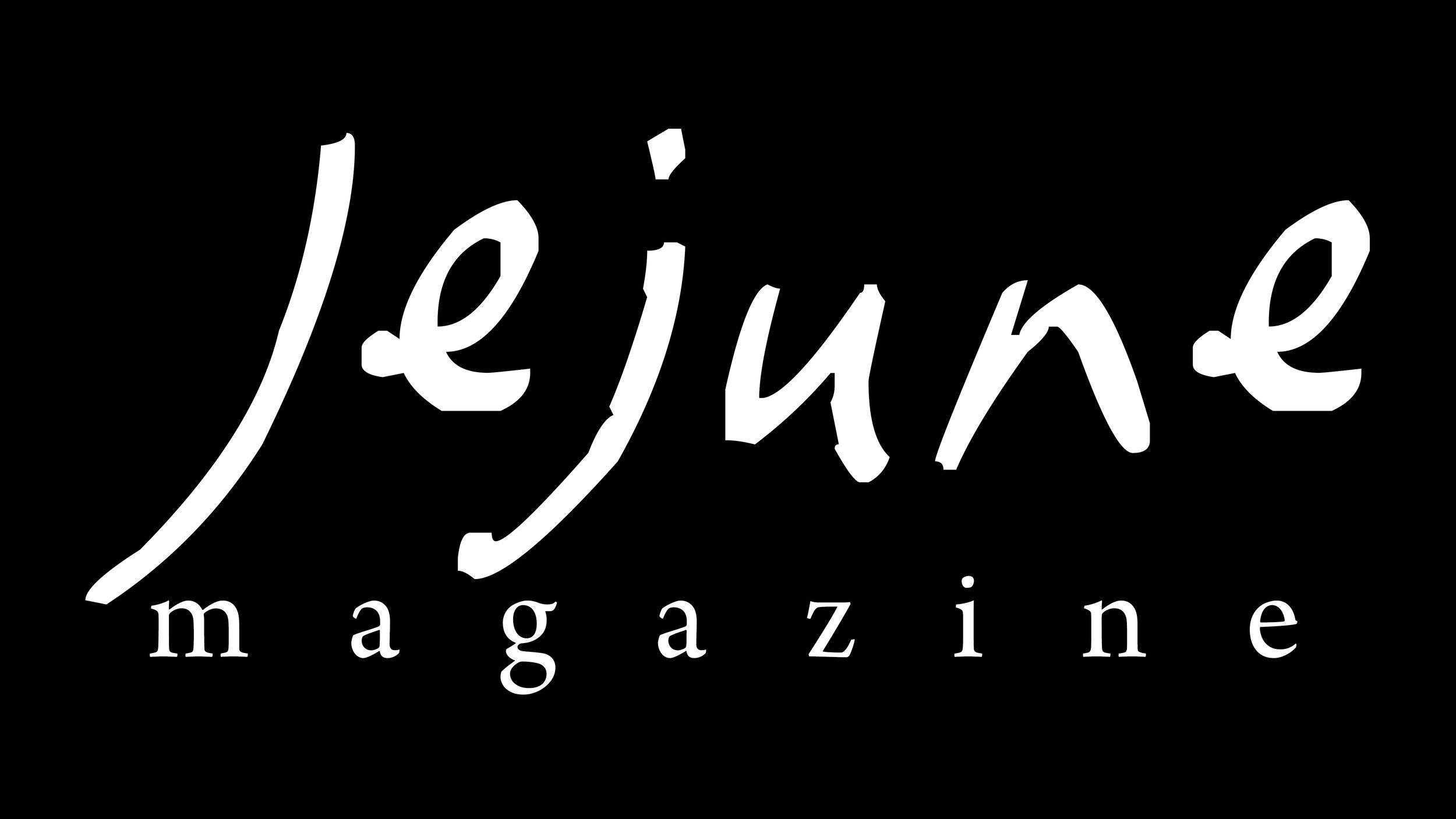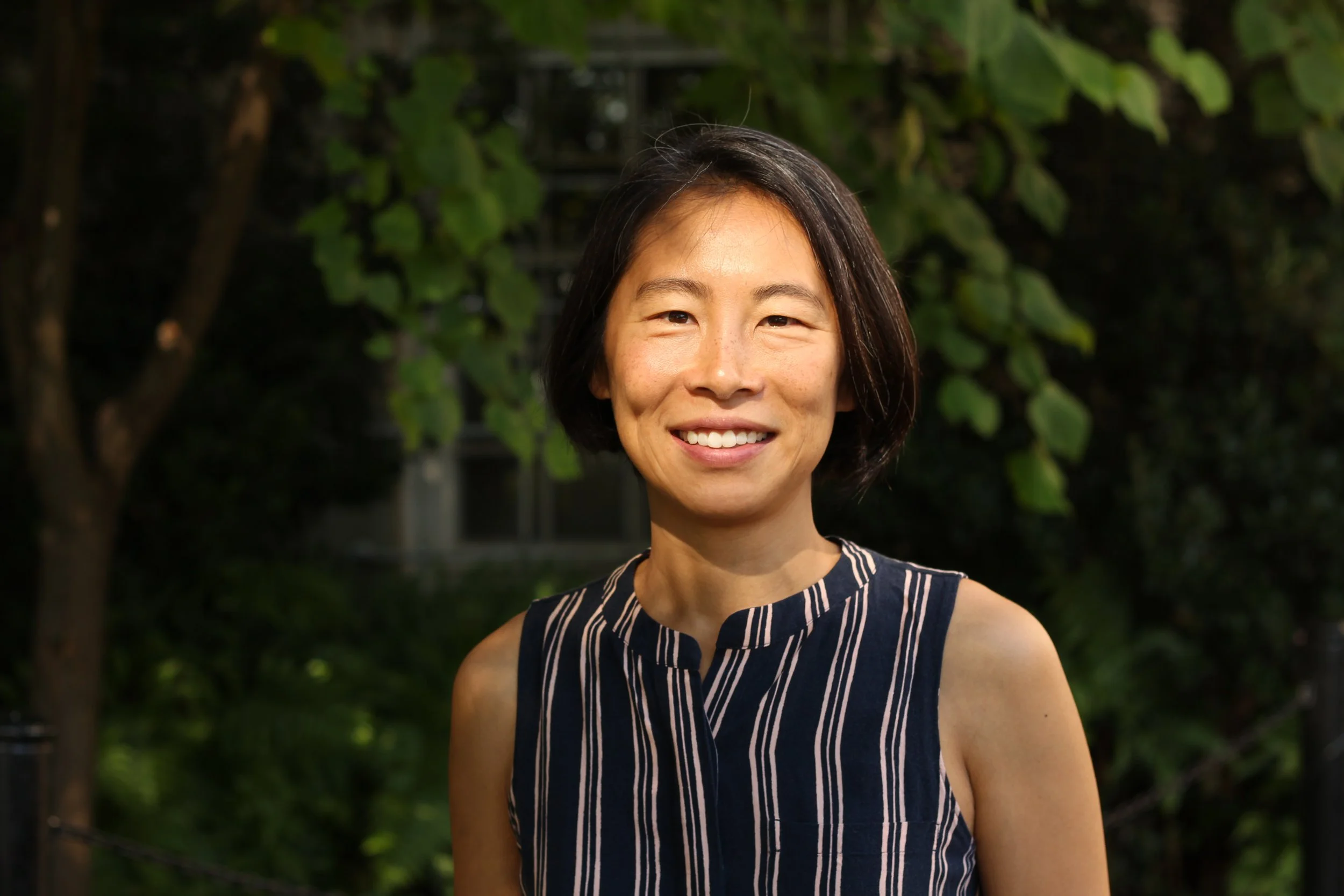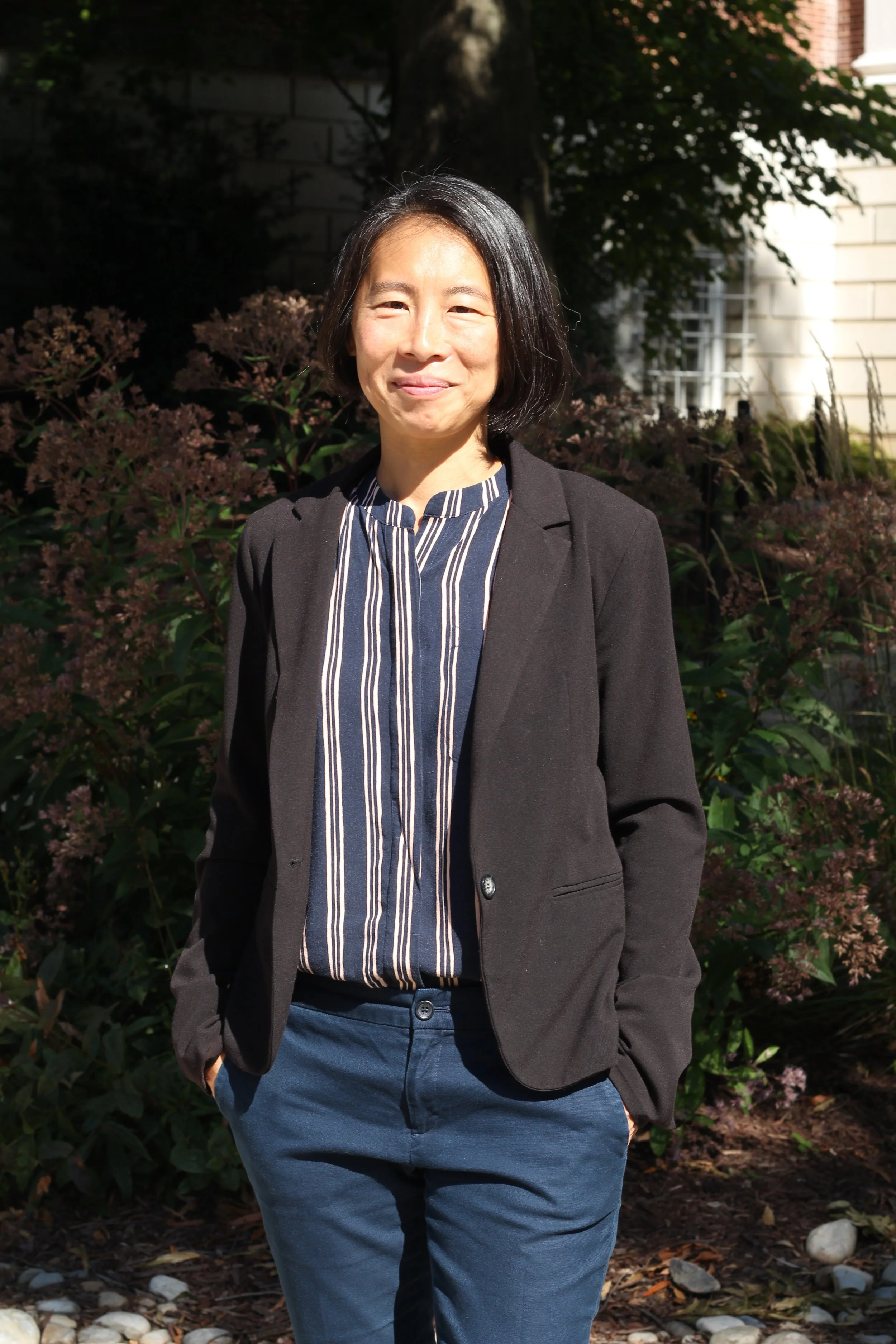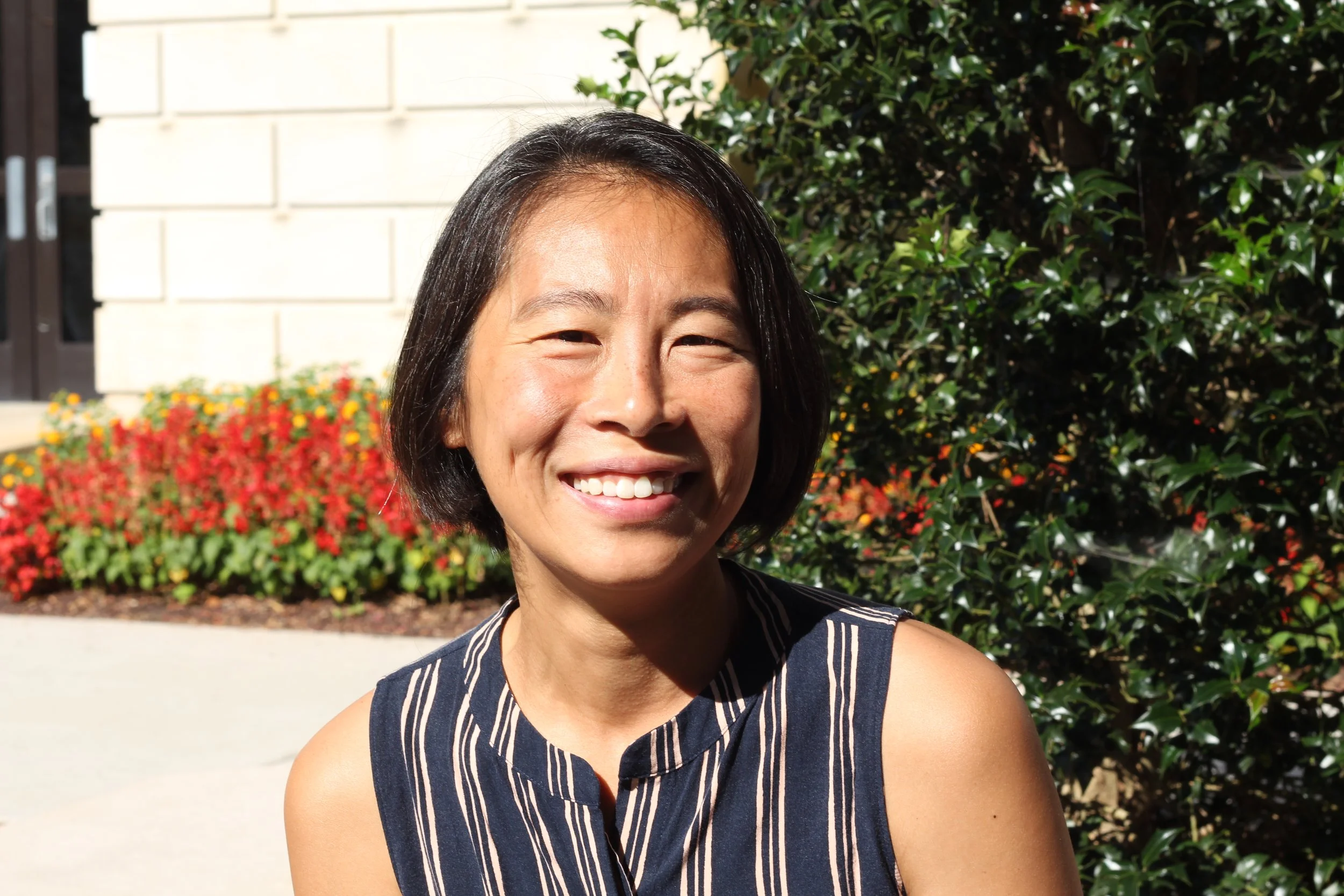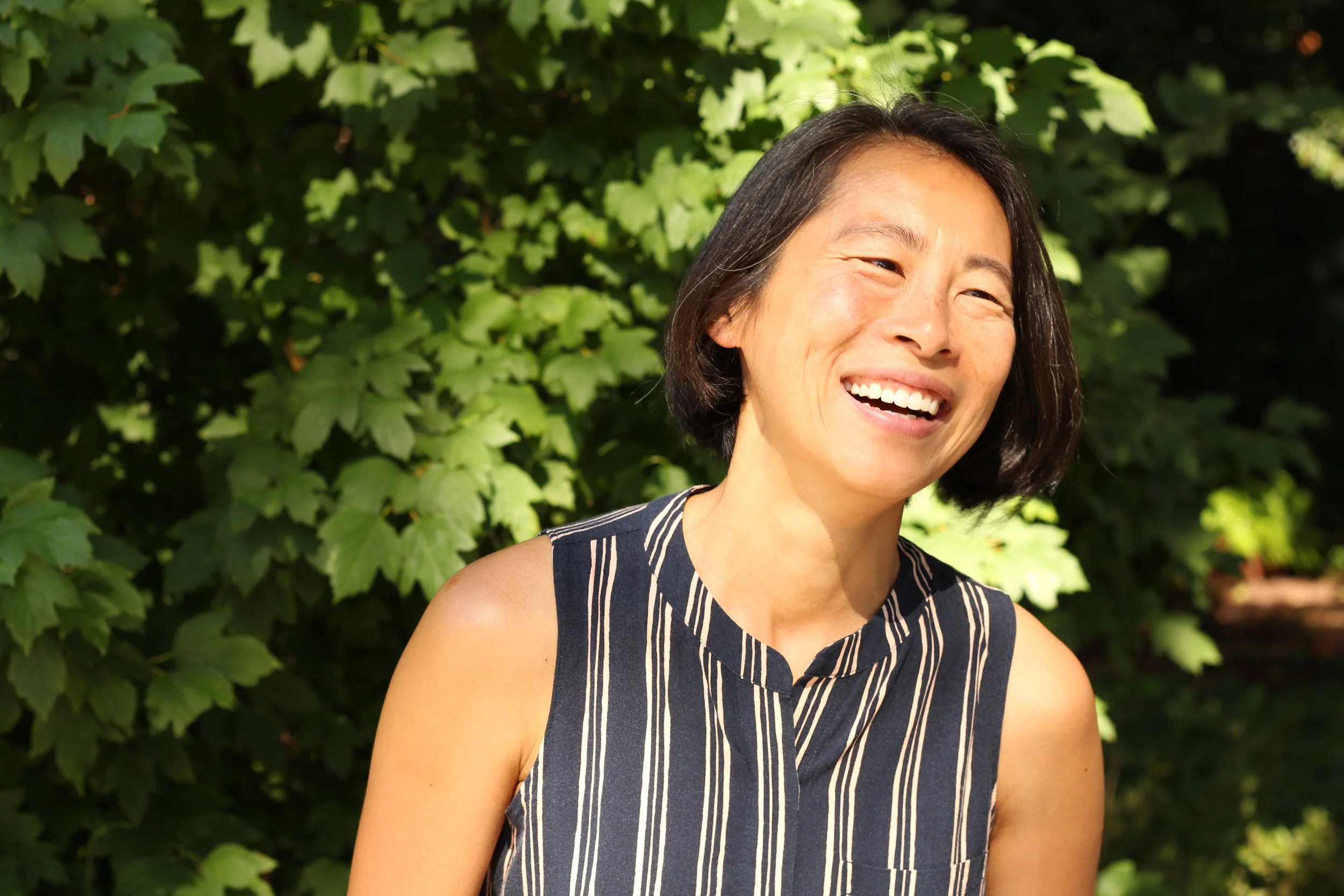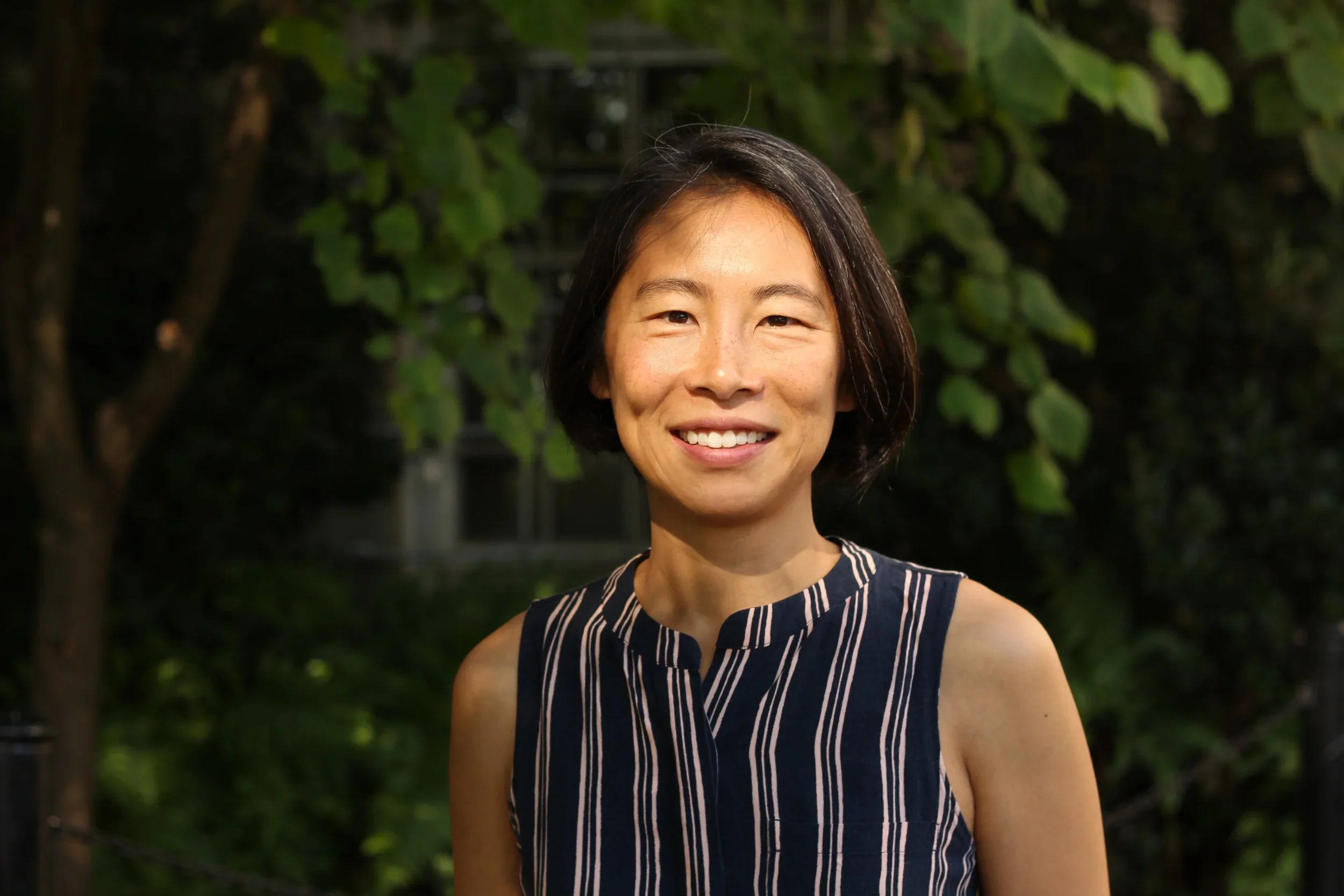Christina Kwauk: Girls Hold the Answer to the Future of Climate Change
© Andrew F
Christina Kwauk (she/her) has been on a lifelong journey of unfolding discovery. Beginning her work in education, her research led her to focus on the education of girls across the world as an area of expertise. While working at the Brookings Institution, a colleague asked her if there was any link between girls’ education and climate change. This question sparked a new course of study for Christina: how investing in girls’ education will aid the fight in climate change. Read on to learn more about Christina Kwauk!
Where are you based?
Washington, DC metro area
What inspired you to get involved in activism?
While I was in graduate school, I started to become uncomfortable with the degree of critique that we as students were being encouraged to engage in (driven probably by our professors’ desires to have us demonstrate our understanding of different social theories through our ability to apply them to our real world research interests), but then being sort of left on our own to ponder the “so what?” question and whether the “recommendations” for policy and practice that we were generating but assuming would be taken up by others were actually feasible, implementable, or even relevant. But because the incentives in graduate school weren’t really structured around solutions and action, I sort of filed away those concerns and discomfort for another day.
Then, when I stumbled into my job at Brookings, a public policy think tank, I began to better understand the merits (and need) for really sticking with and figuring out the “so what?” Answering the ‘so what’ question meant thinking about why a problem that I think is a problem is a problem for others, the need to identify and communicate the evidence of that problem in ways that could get other people to care about it too, and then perhaps most importantly, to figure out how to get people to do something as a result of that care or concern for the problem. So, in many ways, figuring out how to deal with the ‘so what’ question got me into policy advocacy—my form of activism—and later also into capacity building and technical assistance. The ‘so what’ question got me thinking about the alternatives: what could be different, how would that different way of doing something or thinking about something make things better for people for whom business as usual never benefited, etc.
For about 10 years after graduating college, you held a number of jobs that focused on the intersection of gender and education. Can you tell us how your views were formed through these positions and experiences?
I didn’t grow up a feminist—in fact, the word feminism was something to be avoided as liberal brainwash fodder (I grew up in a conservative immigrant household in the American South…). So, it was through encountering the injustices of patriarchy, racism, and other forms of inequality through my post-secondary studies and through the focus of my jobs that I began to first critically question what I took to be truth around me and then sought to understand the impact of structural inequality on the lives and livelihoods of people with different identities that I began to see how social and gender norms were at the center, and the role that educational institutions (both formal schools and informal spaces of learning like community centers, churches, libraries, etc.) play in either perpetuating these norms or challenging these norms. So, I guess it was by encountering the evidence of gender inequality with each new project that solidified my view on gender and education.
© Andrew F
How did your work for Save the Children inform your views on gender and education?
My initial work with Save the Children was perhaps the first space out of graduate school where I got to apply the theoretical knowledge and the analytical training I gained toward a context where people and institutions might actually use my work and recommendations to shape their practices and programming. It was an incredibly intimidating experience, but a very formative and humbling one. It solidified for me my view that if we don’t tackle gender inequality in and through schools that social progress will never be achieved.
In 2020 you became the Associate Director of the Monitoring and Evaluation of Climate Change Education (MECCE) Project. Had you had any experience with climate change work before this?
Yes, I began to explore the intersection of climate change and education during my time at Brookings, which led me to want to focus much more directly on climate change. So when the opportunity came up to help launch this new project (MECCE), I couldn’t help but take it!
How did your work at the Brookings Institution start focusing on climate change in addition to gender and education?
It was actually during my time at Brookings that my professional “climate journey” started. I was in a breakfast work meeting with another colleague from Brookings meeting with Julia Gillard, the former Prime Minister of Australia, and her colleagues in London in the restaurant of the hotel she was staying at. We were discussing progress on a new initiative that we were co-launching with the Clinton Global Initiative called Girls CHARGE. And at the time I was also wrapping up—or maybe had already wrapped up writing a new book called, What Works in Girls’ Education: Evidence for the World’s Best Investment (together with Gene Sterling and Rebecca Winthrop). The conversation somehow got to the topic of climate change, and since I had just finished this massive review of the evidence around the benefits of investing in girls’ education, Julia Gillard turned to me and asked what the evidence was around girls’ education and climate change. After trying to jog my memory for evidence on the topic, I couldn’t give her much. There had been a few studies indicating female education levels were associated with lower mortality rates during extreme weather events, and anecdotal accounts of how drought and flooding was putting girls at greater risk of early and forced child marriage in certain parts of the world. But there wasn’t much. And because there wasn’t much evidence, my researcher brain kicked into gear. We had just finished a book on why girls’ education was the world’s best investment, surely this would hold true in the context of climate change?! And from that point on, I became obsessed with understanding how climate change impacts education, and how education can help address climate change.
© Andrew F
How possible and likely is it that children in school now and in the future will learn about climate change and how to combat it, when so many governments either spread climate change denial propaganda or are otherwise deliberately ignorant of climate change in the interests of global capitalism?
Well, the good news is that youth around the world are demanding to learn about climate change. And with enough pressure and with more and more efforts to mainstream climate change into education, I think we will see climate change education in schools becoming more and more widespread. UNESCO has been pushing for this with their Greening Education Partnership, together with the Global Partnership for Education, and some of the large international NGOs like Save the Children and some bilateral agencies like the UK’s Foreign and Commonwealth Development Office. Community-based or community-serving NGOs around the world are also working to develop extracurricular educational programming to expose children and youth to important climate information and local climate action.
In some cases, jumping onto the bandwagon of delivering climate change education will beg the question as to whether those efforts are QUALITY climate change education, or just ticking a box to satisfy global accountability metrics or to temporarily quiet local youth advocates and climate champions. So even as we start to see some progress being made around climate change education, we have to stay vigilant and make sure that this education is scientifically sound, incorporates indigenous knowledge, centers climate justice, and gives us hope for transforming our energy systems and economies.
But you’re right. What’s worrisome is that children and young people in countries whose leadership have chosen to side with the wrong side of human history and insist that climate change is a hoax or that coal and oil are the future—children and youth in those countries (like the US) have been essentially betrayed by their governments. Their political leaders are choosing short term political gains, power, and wealth over ensuring the quality of life for future generations on this planet. And as a result of their selfish actions, children and youth in these countries—and especially those who have been historically discriminated against, underinvested in, or socially excluded—will not have formal opportunities in school to prepare themselves to navigate and face the new realities created by the climate crisis. Children in those countries will have to depend increasingly on other forms of access to climate change education content (e.g., nonformal education programs, museums, social media, etc.).
In fact, there have been several surveys and studies done in the US, the UK, and elsewhere around the globe showing how most young people are getting their information about climate change through social media instead of at school—usually because they aren’t getting this information at school. And without critical media literacy, the chances of misinformation through social media are enormous, which adds further to the worry for children and youth in countries where their political leaders have betrayed them. In these contexts we need more advocacy to raise critical awareness about which leaders are doing harm to the next generation and to raise awareness amongst a new generation of leaders about the critical importance of climate change education on their countries’ capacity to adapt to the climate crisis and to become more resilient.
© Andrew F
In your work you differentiate “privilege” and “rights”. How does climate education and activism move from “privilege” to “rights” on a global scale?
This distinction is exactly what we need more people to be aware of. Climate change education should not be a privilege that only a select few groups and subgroups have access to. Instead, climate change education should be viewed as a right, just as we understand today that access to quality education is a basic human right that every child and young person should have access to regardless of where they were born.
So when we think about our advocacy and activism around climate change education, we have to be crystal clear in our messaging that every child, including girls, children with disabilities, children who have been displaced, etc., that every child has the right to quality, scientifically accurate, gender-responsive, Indigenous knowledge-informed climate change education. Every child has the right to learn about the climate crisis, humanity’s role in creating that crisis, who suffers the most because of those actions, and what we can do as individuals and collectively as society to reverse course and restore and regenerate the living systems upon which we depend. Every young adult has the right to learn about the green economy and the ways they can help build it and participate in it. It is immoral and counterproductive to provide education and training to young people for jobs in industries that we must transition away from, or to prepare them for jobs without teaching them how to make those jobs more environmentally conscious and sustainable. In the midst of a climate crisis, climate change education for a privileged few—e.g., for those in the Global North, those who can afford opportunities to access outdoor or environmental education, those who can afford the admissions ticket to a science museum, etc.—is like offering water during a drought to only those who can afford to purchase it. It’s just not right.
© Andrew F
You have traveled extensively, particularly to Southeast Asia and Oceania. What anti-climate change efforts have you witnessed around the world and do any have the potential to become scalable solutions for all countries and people?
Some of the best examples of climate change education that I have come across are incredibly local, making them really challenging to scale. They often center on addressing local impacts of climate change and draw on local cultural and Indigenous knowledge to inform students’ understanding of the underlying problems and of the most transformative solutions. However, although these efforts are often hyperlocal, you can thread different “key ingredients” across them. They all start with a cognitive point of entry (like a key concept or a local current event about climate change) paired with an affective dimension (an emotional connection) that hooks learners by making them care. Care and care for others and the more-than-human world, including empathy, compassion, and solidarity is often at the cornerstone of transformative learning experiences like these. But the learning experience doesn’t stop there. Critically, there is also an existential experience—a moment at which the learner is confronted with an understanding of the world that challenges their existing beliefs, worldviews, and paradigms and makes them think critically about the way things are. But, these programs don’t just leave learners in the middle of this existential crisis. They help them build a sense of ownership or a sense of responsibility for the issue and for the solution, and they create opportunities for learners to engage in empowered action (or dissent), gaining a sense of agency and a sense of direction. It’s these “key ingredients” that are highly scalable. But importantly, in that process of scaling the initiative has to become incredibly local. It’s a bit counterintuitive, but it aligns so much with the climate crisis—it’s impacts are incredibly local, but at the same time experienced globally.
The United Nations has mentioned the education of women and girls as one of its Sustainable Development Goals. One of the effects of the increasing education of women and girls around the world is the decrease of teen and unwanted pregnancies. Yet as birth rates have fallen globally, right-wing elements in Western countries have started making noise about rolling back women’s rights and education as a way of increasing birthrates. Do you think this is a real threat and is it possible that a reactionary government, facing a plummeting birthrate, will take drastic actions to increase it?
I definitely worry about the rise of pronatalism in the context of growing threats against reproductive rights and bodily autonomy. We’ve already begun to see alarming rollbacks in progress in the US when it comes to access to family planning, including contraceptives and abortion. The rise of pronatalism is also dripping with white supremacy and eugenics, not to mention a clearly blatant display of a patriarchal mindset. This needs to be called out each and every time, especially when the narrative is fear-mongering, spreads misinformation, and does nothing to address the structural and systemic barriers to affordable and quality pre-, neo, and post-natal care, maternal health and mental health care, fully paid and adequate parental leave, affordable and quality early childhood care and education, affordable and quality basic education, universal health care, etc. You cannot support pronatalism without also supporting these comprehensive family and social support services, which very clearly those who are spreading pronatalism propaganda could care less about.
Do you see the intersection of gender, education, and climate change as a winning political issue for progressive parties and governments?
I wish it were so. I think the challenge is helping the masses understand first that education is vitally important to humanity’s ability to respond effectively to climate change. Then I think we can begin to help people understand the nuances of how climate change disproportionately impacts those experiencing inequalities structured by gender, race, socioeconomic class, geography, etc. However, this reality should not stop advocates from pushing progressive parties and governments to keep these issues front and center in their policy responses. I think we’re at a time where wearing feminism on your sleeve might be counterproductive when trying to work across the aisle. Rather, we need progressive parties to embed it in their approach without using the words that’ll trigger right-wingers to react and cry wolf.
© Andrew F
You have also talked about anti-racism as an important issue. How does antiracism intersect with gender, education, and climate change, and are you going to start including antiracism as another intersecting issue in your study?
Yes, I think antiracism is an embedded lens in my work. I have often described my approach (in more academic circles) as an intersectional feminist approach, where we take into consideration how multiple layers of identity shape experience—gender, race, geography, class, etc. These all go hand in hand when trying to understand how climate change impacts the most vulnerable, and how our solutions must therefore be designed.
It has been a crazy past few years, and we suspect at least four more. How have you been staying positive?
It’s been incredibly difficult to stay positive… This year, I’ve had to practice selective attention and to let go (of so many things….). I’ve wanted to be on the streets protesting (I was out there in 2017 on several occasions!), but this time things just feel… different. And incredibly unsafe.
When I haven’t been crying at the devastating impact of the closure of USAID and the ripple effects that has caused my work directly, I’ve been burying my head in climate fiction. It’s my only way to help me get out of my head, my anxiety, my grief, and my fear and to consider what is possible—either if we do nothing or if we do everything in our power. Some of the books that I have read have further fueled the feelings of devastation and grief. But some of the books have also strangely helped me to process what is in my power as an individual, and what I need to do in community with others. It’s been incredibly cathartic and enlightening, which perhaps is one dimension of staying positive.
What is your motto in life?
Since college I have had a passage from Frank Herbert’s Dune in sight of my desk: “I must not fear. Fear is the mind-killer. Fear is the little-death that brings total obliteration. I will face my fear. I will permit it to pass over me and through me. And when it has gone past, I will turn the inner eye to see its path. Where the fear has gone, there will be nothing. Only I will remain.” This has helped me many times when I waver between analytic paralysis and choosing a path of action.
Where can we find out more about you?
Perhaps the best way is my LinkedIn page: https://www.linkedin.com/in/christina-kwauk/ I am not active on other social media sites.
